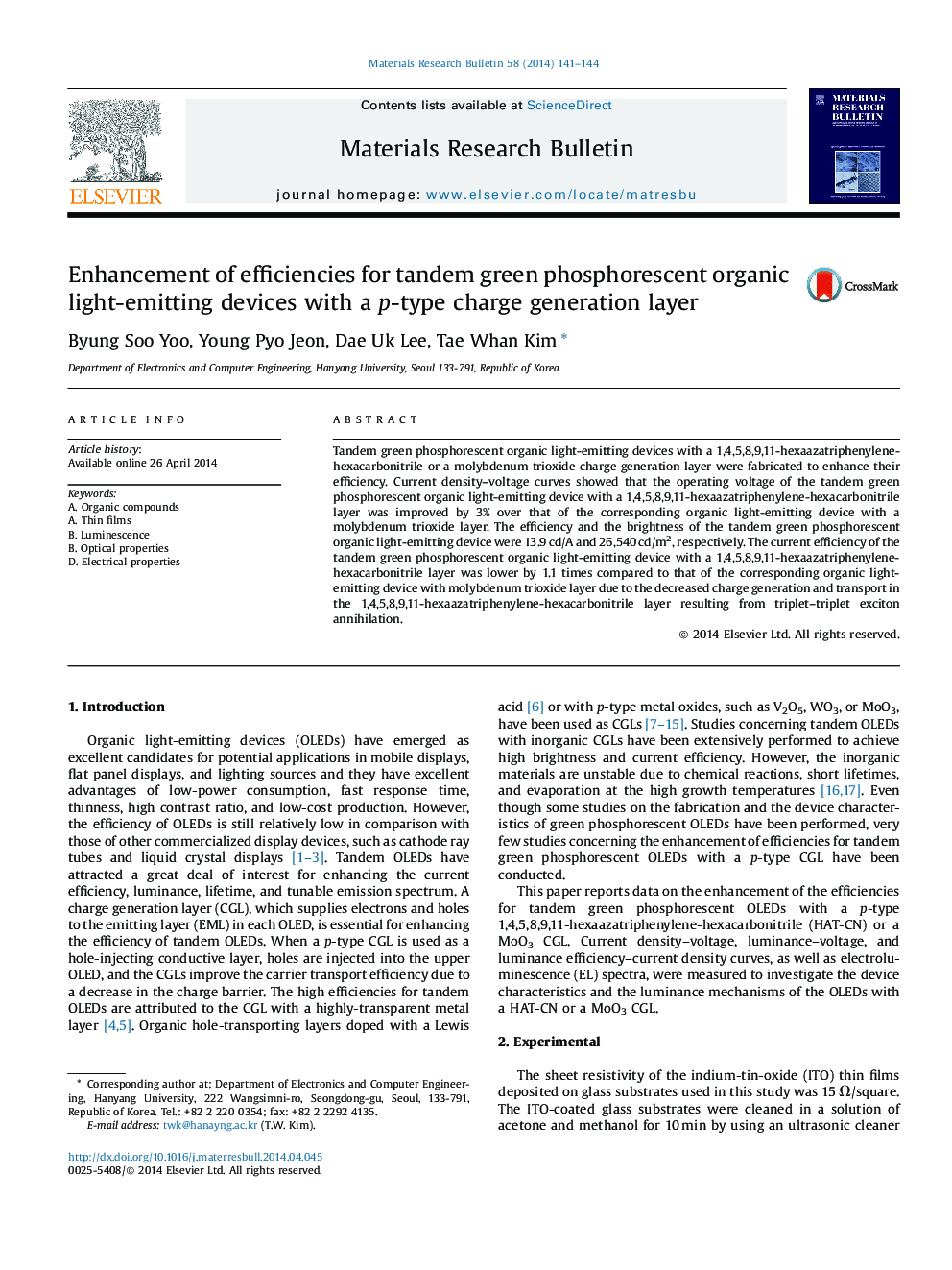| Article ID | Journal | Published Year | Pages | File Type |
|---|---|---|---|---|
| 1488321 | Materials Research Bulletin | 2014 | 4 Pages |
•Tandem OLEDs with CGL were fabricated to enhance their efficiency.•The operating voltage of the tandem OLED with a HAT-CN layer was improved by 3%.•The efficiency and brightness of the tandem OLED were 13.9 cd/A and 26,540 cd/m2.•Efficiency of the OLED with a HAT-CN layer was lower than that with a MoO3 layer.
Tandem green phosphorescent organic light-emitting devices with a 1,4,5,8,9,11-hexaazatriphenylene-hexacarbonitrile or a molybdenum trioxide charge generation layer were fabricated to enhance their efficiency. Current density–voltage curves showed that the operating voltage of the tandem green phosphorescent organic light-emitting device with a 1,4,5,8,9,11-hexaazatriphenylene-hexacarbonitrile layer was improved by 3% over that of the corresponding organic light-emitting device with a molybdenum trioxide layer. The efficiency and the brightness of the tandem green phosphorescent organic light-emitting device were 13.9 cd/A and 26,540 cd/m2, respectively. The current efficiency of the tandem green phosphorescent organic light-emitting device with a 1,4,5,8,9,11-hexaazatriphenylene-hexacarbonitrile layer was lower by 1.1 times compared to that of the corresponding organic light-emitting device with molybdenum trioxide layer due to the decreased charge generation and transport in the 1,4,5,8,9,11-hexaazatriphenylene-hexacarbonitrile layer resulting from triplet–triplet exciton annihilation.
Graphical abstractFigure optionsDownload full-size imageDownload as PowerPoint slideThe operating voltage of the tandem green phosphorescent organic light-emitting device with a 1,4,5,8,9,11-hexaazatriphenylene-hexacarbonitrile layer was improved by 3% over that of the organic light-emitting device with a molybdenum trioxide layer. The maximum brightness of the tandem green phosphorescent organic light-emitting device at 21.9 V was 26,540 cd/m2. The dominant peak of the electroluminescence spectra for the devices was related to the fac-tris(2-phenylpyridine) iridium emission.
